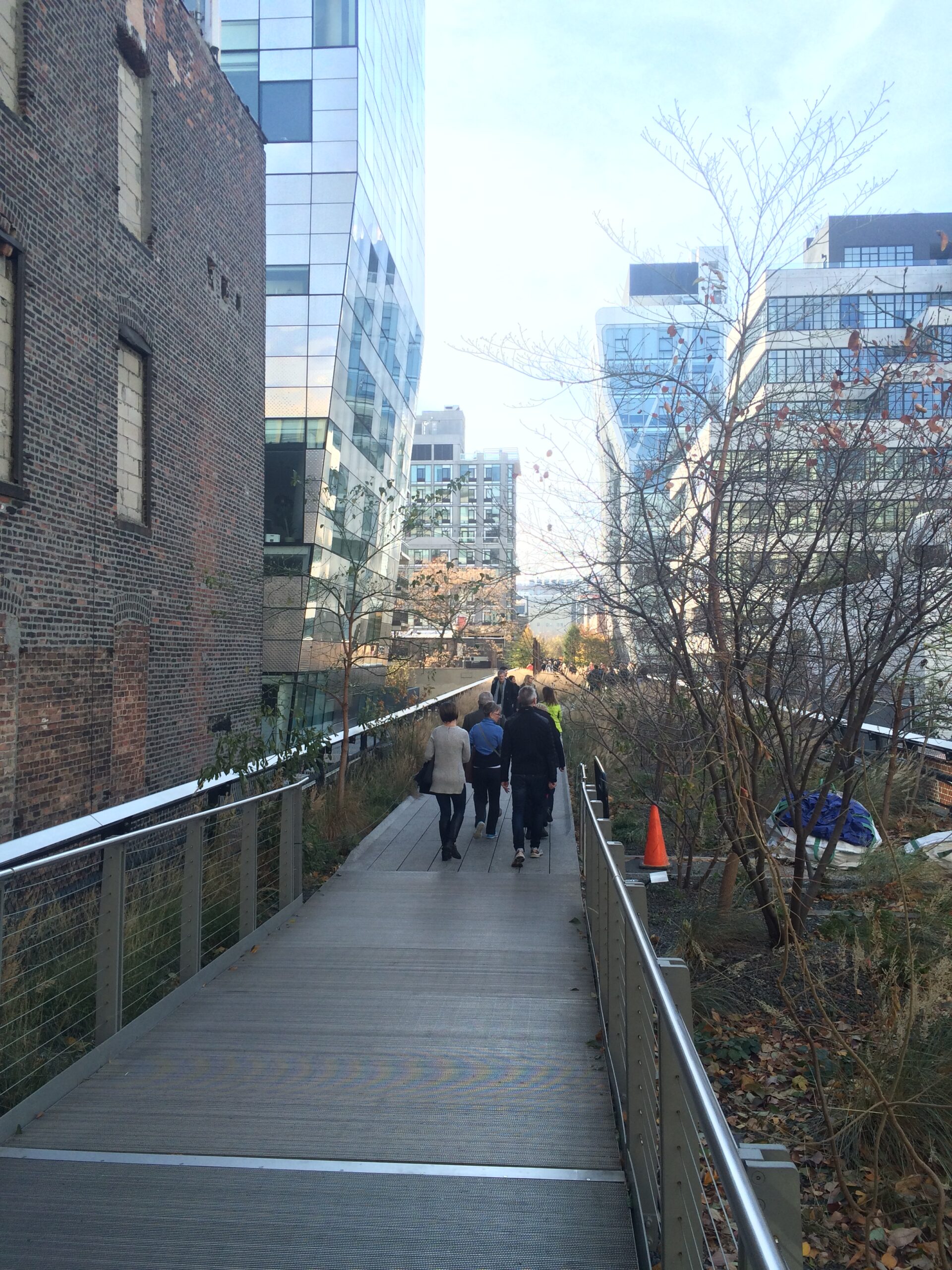By Maureen Ashe and Nicola Cherneski
October 14, 2016
I have become acutely aware of the micro-features of the built environment that impact a neighbourhood’s walkability. In particular, this summer it seemed like lawn sprinklers created an obstacle course as I walked to work. Sprinklers went off at exactly the same time that I was trying to get to my destination. Maybe water dodging makes for good speed and agility training?
While I saw my daily walk to work as a training course, I had not thought much of the obstacles the sprinklers posed to others in my community. One morning, I happened to chat with an older woman walking outside with a mobility aid. She asked me if the sprinklers were on: she explained that sometimes the spray and pooling water diverted her journey away from the safety of the sidewalk, and onto the street. It was a good reminder that even with the best sidewalks possible, what overlays the sidewalk can also create barriers. It made me think of the seasons of sidewalks. It is not just snow and ice that can be barriers to outdoor mobility, sprinklers in the summer and leaves or rain in the autumn and spring can cause just as much worry and concern for some.
Sidewalks are a basic (micro) feature of the built environment to support community walking (mobility)1. We are beginning to understand that the built environment, the human-made surroundings that provide a setting for our activity, can support–or get in the way of– regular physical activity.
In previous work from our lab2, street-level factors, such as the availability and condition of sidewalks were identified as important for outdoor walking and feasible to change. That is, they require relatively less resources compared with changing community (or neighbourhood) level factors. By contrast, other research highlights that sidewalks in poor condition negatively affected all types of walking (recreational and active transport) in urban settings3. Poor sidewalk quality decreases neighbourhood safety and can act as a barrier to physical activity, especially for older adults with mobility limitations4. But as I noticed this summer, it may not simply be about the presence or quality of the sidewalk when it comes to outdoor walking, the condition can be just as important. That is, litter, debris or other naturally occurring obstacles can still create barriers for walking.
So as the autumn season is upon us–at least in the northern hemisphere– we invite you to look around your community and consider the modifiable micro-features of the built environment that are impeding or encouraging community mobility.
References
